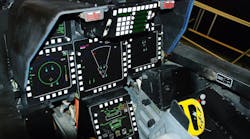ARLINGTON, Va. – With tons of U.S. vehicles and aircraft left behind in Afghanistan, America’s near-peer competitors like China and Russia stand to learn a lot, according to Josh Lospinoso, the CEO of cyber security company Shift5 in Arlington, Va. American Military News reports. Continue reading original article
The Military & Aerospace Electronics take:
5 Oct. 2021 -- In the final weeks of the U.S. military mission in Afghanistan, U.S.-backed Afghan government forces surrendered to the Taliban and U.S. troops became overwhelmed with the task of evacuating tens of thousands of people out of an airport under constant threat of attack. In the chaos, tons of drones, planes, helicopters, armored vehicles and other equipment were left up for grabs.
The Taliban, Lospinoso says, have their hands on much of that U.S. equipment, and potentially could sell it to countries like Russia or China. This creates a playground for America’s adversaries to figure out how the equipment works and how hack it and “turn it into a paperweight."
Lospinoso was among the first crop of officers to help form the U.S. Army’s Cyber Command. In that role, Lospinoso spent a lot of his time conducting penetration tests where he would try to find ways to hack into the digital components of military equipment to interfere with their physical operations.
Related: Military cyber security: threats and solutions
Related: Cybersecurity and encryption for the masses
John Keller, chief editor
Military & Aerospace Electronics



